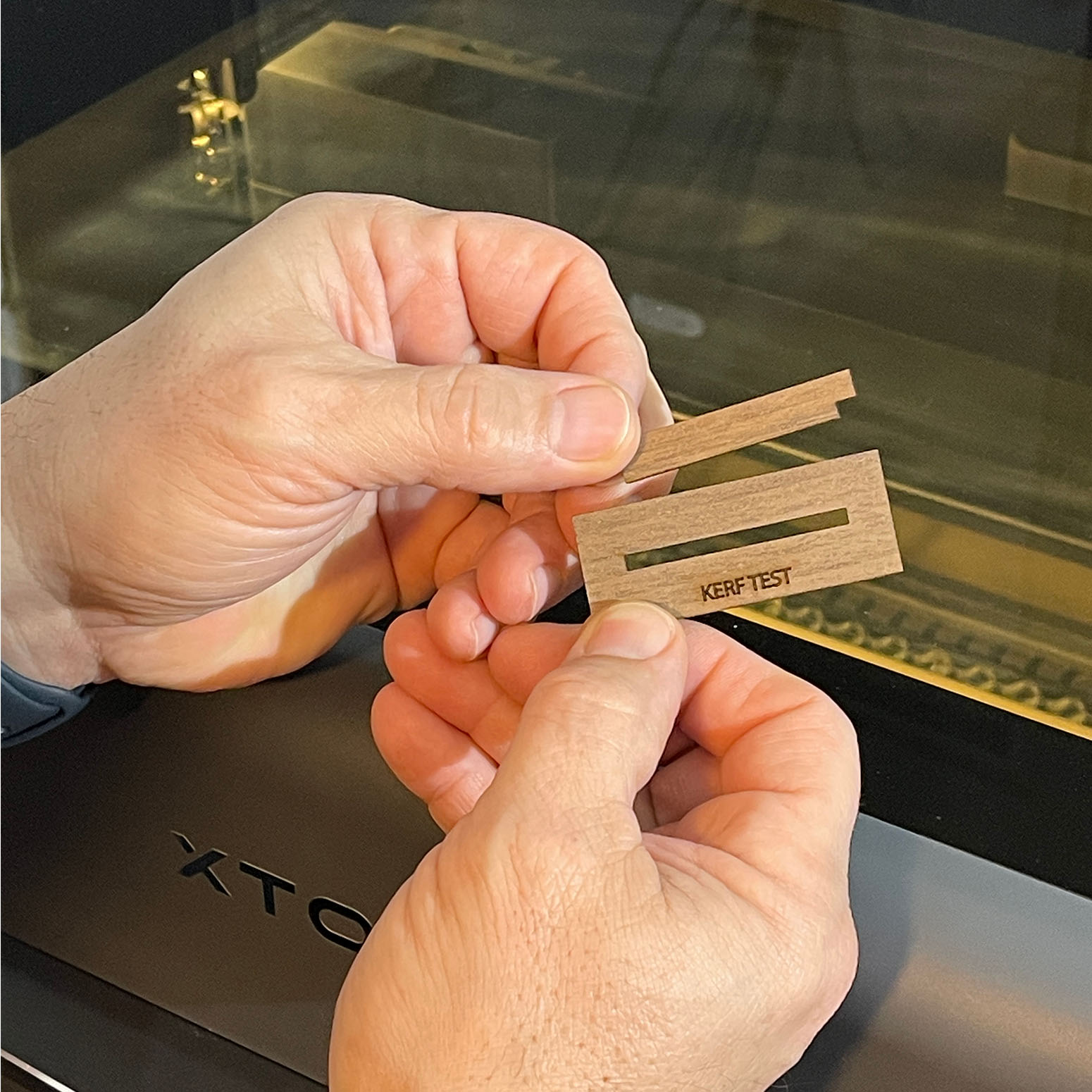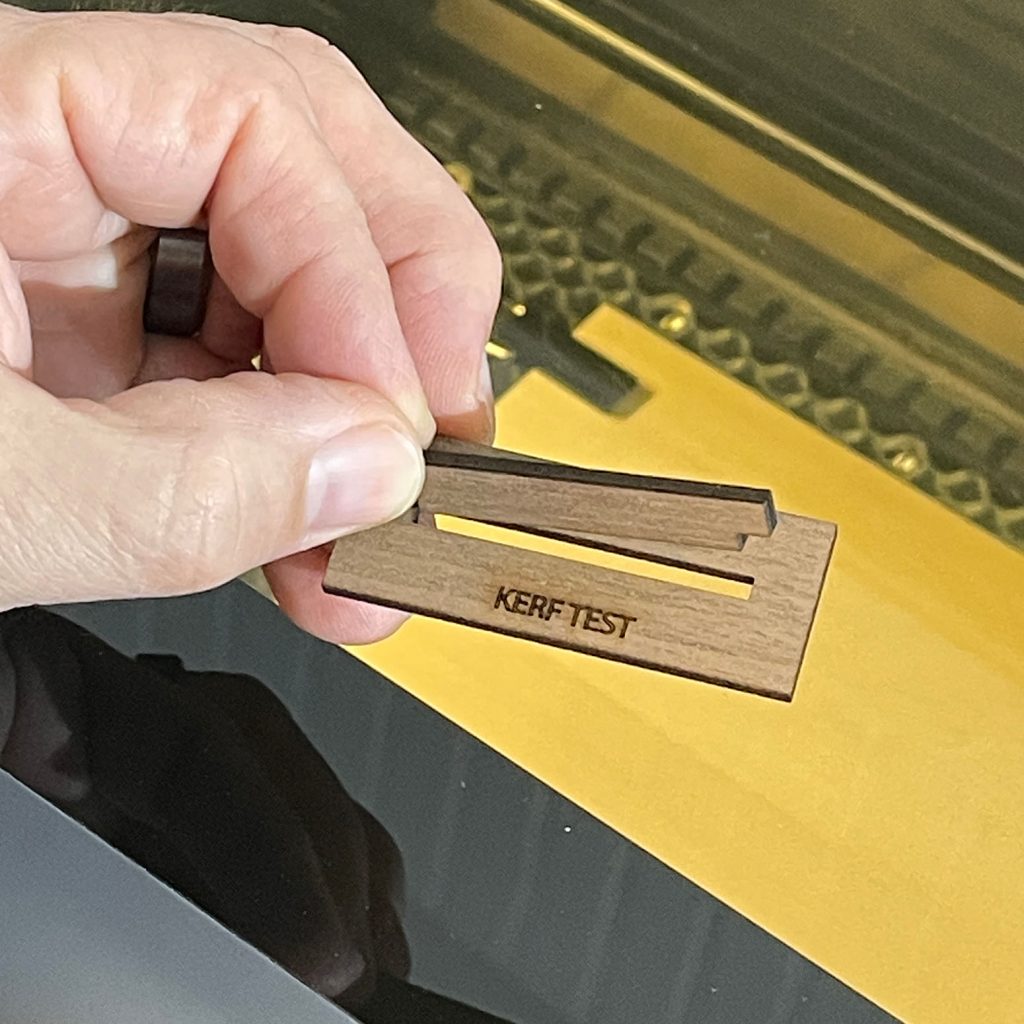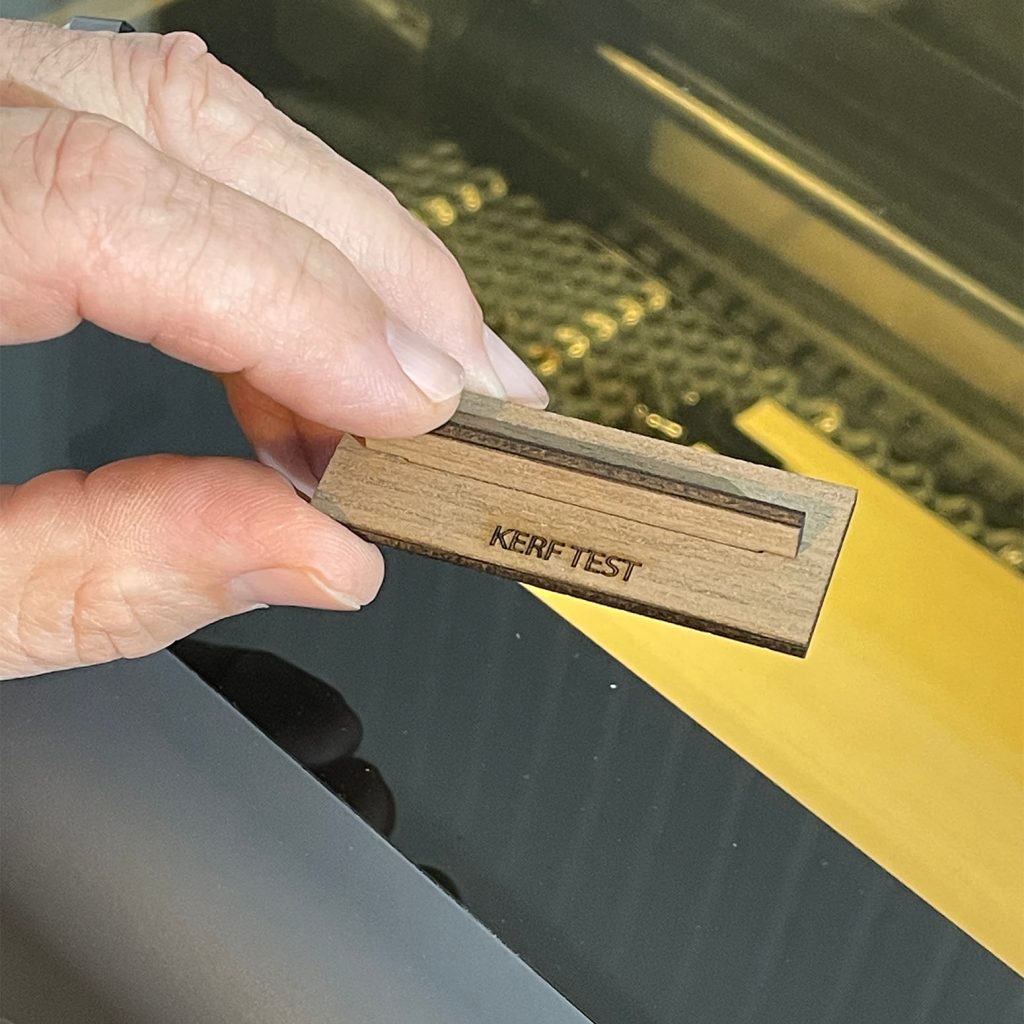
When creating laser-cut projects that fit together using tabs, achieving a perfect fit is all about understanding kerf—the small amount of material removed by the laser as it cuts.
What is Kerf?
Kerf is the width of the cut made by the laser. This width can vary from project to project as it differs based on factors like laser power, cut speed, and material type.
Since kerf affects the final dimensions of your pieces, failing to account for it can result in loose or overly tight fits. That’s why adjusting for kerf is crucial when designing interlocking parts.
How to Measure Kerf
A simple way to determine your laser’s kerf is by cutting a 1-inch square, then measuring it with calipers. If the final piece measures 0.993 inches, the kerf is 0.007 inches (1.000 – 0.993 = 0.007).
However, keep in mind that kerf varies depending on your settings and materials. Different materials and laser settings can slightly alter the kerf, which means a test cut is always recommended before committing to a full project.
We Include a Kerf Test in Every Project with Tabs
To save you time and material, we provide a small slot and tab cutout in every one of our designs that includes interlocking parts. This lets you quickly test, adjust, and retest your settings before making the final cut—saving time, material, frustration, and ensuring a flawless fit every time.


